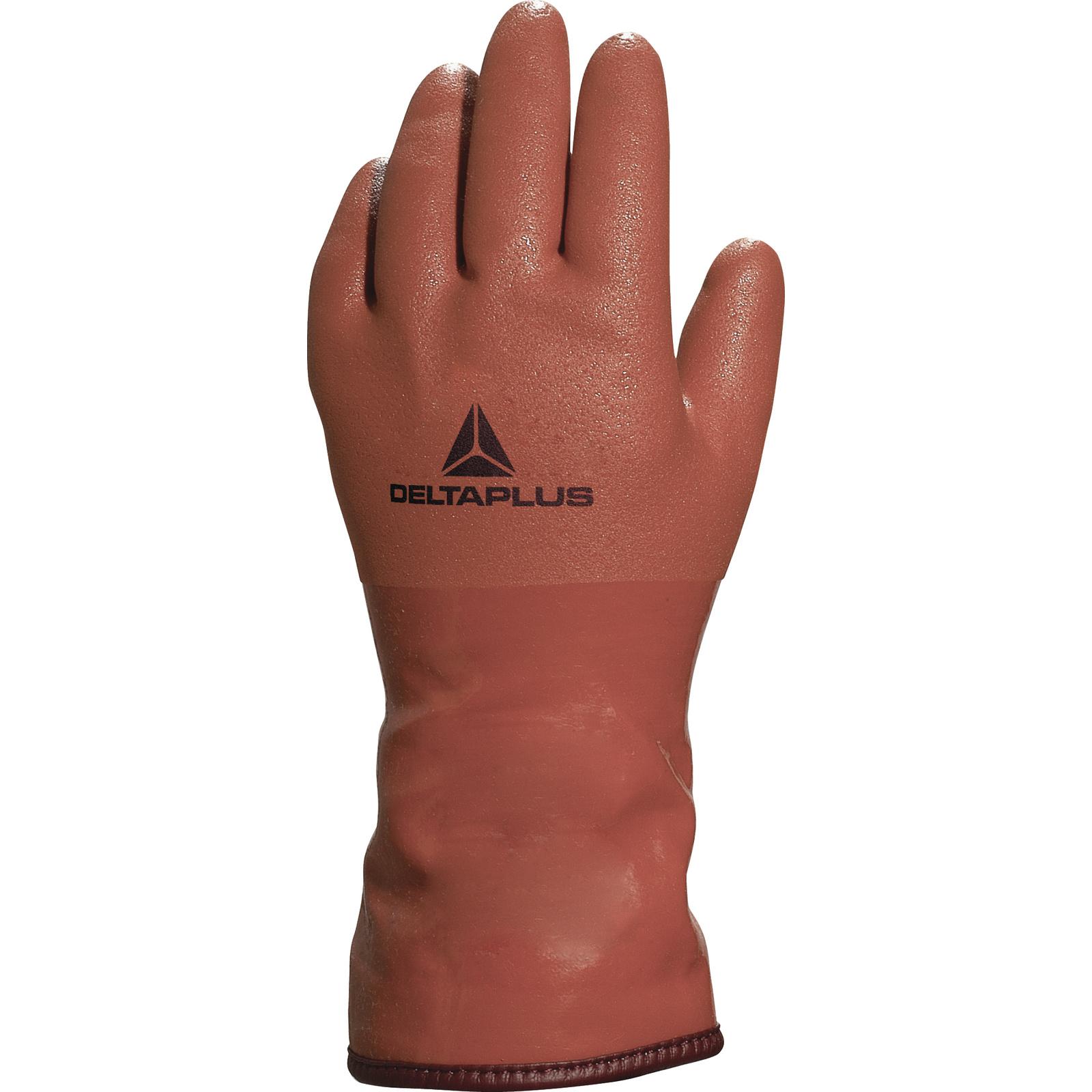The product complies with the European Directive 89/686, notably regarding ergonomics, innocuousness, comfort and with standards :
PVC COATED WARM ACRYLIC LINER GLOVE
Chemical PVC. PVC on cotton lining gauge 13. Acrylic lining. Length: 30 cm.
PVC
Acrylic coating
15/02/16

Acrylic lining :
• Cold protection
| Reference |
pcb |
Colour |
Size |
| VE760OR10 |
60 |
Orange |
10 |
EN420:2003+A1:2009 General requirements - 5 Dexterity (from 1 to 5)
• Conform to harmlessness (pH, chrome VI levels, etc…).
• Conform to the size charts (see chart on below).
• Pass the dexterity test.
• Conform to the labelling, information and identification instructions.
EN388:2003 Protective gloves against mechanical Risks (Levels obtained on the palm) - 4 Resistance to abrasion (from 1 to 4)
- 2 Resistance to cutting (from 1 to 5)
- 2 Resistance to tear (from 1 to 4)
- 1 Resistance to puncture (1 to 4)
The EN388 standard applies to all types of protective gloves with respect to physical and mechanical aggression from abrasion, cutting from slicing, perforation and tearing.
ABRASION RESISTANCE (1 à 4): Number of cycles required to damage the sample at constant speed.
RESISTANCE TO CUTTING WITH A BLADE (1 à 5): Number of cycles required to cut the sample at constant speed.
RESISTANCE TO TEARING (1 à 4): Maximum force required to tear the sample.
RESISTANCE TO PERFORATION (1 à 4): Force required to pierce the sample with a standardized punch.
EN374-2:2003 Protective gloves against chemicals and micro-organisms - Part 2: Determination of resistance to penetration - Resistant gloves to micro-organisms (bacteria, mushrooms), tested according to EN374-2
Penetration (tested as per standard EN374-2):
Diffusion, at a non molecular scale, of a chemical product and/or micro-organism through the porosities, seams, micro-holes or other imperfections present in the material of the protective glove.
EN374-3:2003 Protective gloves against chemicals and micro-organisms - Part 3: Determination of resistance to permeation by chemicals - AKL Resistant gloves to permeation by chemicals, tested according to EN374-3
- 2 >30mn Méthanol (A) CAS 67-56-1
- Acetone (B) CAS 67-64-1
- Acetonitrile (C) CAS 75-05-8
- Dichloromethane (D) CAS 75-09-2
- Carbon disulfide (E) CAS 75-15-0
- Toluene (F) CAS 108-88-3
- Diethylamine (G) CAS109-89-7
- Tetrahydrofuran (H) CAS 109-99-9
- Ethyl acetate (I) CAS 141-78-6
- n-Heptane (J) CAS 142-85-5
- 6 >480mn Caustic soda 40% (K) CAS 1310-73-2
- 3 >60mn Sulphuric acid 96 % (L ) CAS 7664-93-9
Permeation (tested as per standard EN374-3):
Process by which a chemical product diffuses through the material of a protective glove, at the molecular scale. A glove is considered resistant to chemical products if it obtains a performance index to permeation at least equal to 2 for three test chemical products included in the following list of chemical products:
EN511:2006 Protective gloves against cold (X = Unrealized test) - 1 Resistance to convective cold (from 1 to 4)
- 2 Resistance to contact cold (from 1 to 4)
- 1 Waterproof (0 or 1)
The EN511 standard defines the requirements and test methods for cold protection gloves from cold transmitted by convection or conduction down to -30°C. This cold can be from climatic conditions or industrial activity.
– Resistance to convective cold: 1 to 4.
– Resistance to contact cold: 1 to 4.
– Impermeability to water: 1 to 1.


